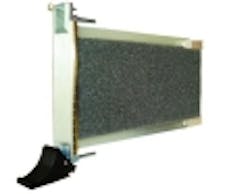Air Force uses optical simulation software from Optis to simulate and evaluate military laser eye protection
TROY, Mich., 1 July 2010. U.S. Air Force researchers needed light and color simulation software to simulate laser protection eyewear. They found their solution from Optis North America Inc. in Troy, Mich.
Experts in the Optical Radiation Branch of the Air Force Research Lab's Directed Energy Bioeffects Division at Brooks-City Base in San Antonio, Texas, are deploying the Optis OptisWorks software to simulate the performance of manufacturers' proposed designs of anti-laser eyewear.
OptisWorks enables researchers to evaluate a manufacturer's design to protect the eyes of military aircraft pilots from the risk of injury from lasers. Although traditional laser eye protection gives some protection by filtering out the undesirable wavelengths of light while still transmitting visible light, their light-blocking color filters can make cockpit instruments difficult to see.
Researchers use OptisWorks's reverse ray tracing techniques to analyze geometric coverage of laser eye protection. Reverse ray tracing considers the eye as a source and each ray emitted around the eyewear as a possible entry path for a laser. Researchers also use the software to measure the degree of color change that occurs when the pilot views a specific element of cockpit instrumentation through laser eye protection.
For more information contact Optis online at www.optis-world.com.
